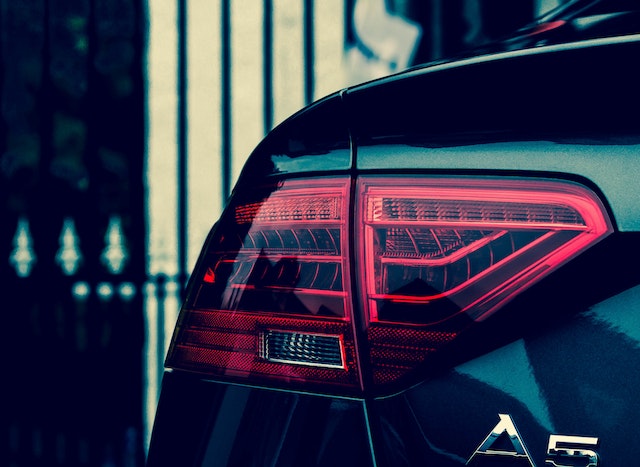
One type of industry with very tight competition is the automotive industry. There is no exact measure of how many units must be sold each year (Ferrari’s sales target is of course much less than Daihatsu’s) but there is always a sales benchmark in each product segment, determining whether a product can be said to be successful or a failure. There are several things that become “parameter competition” in the automotive industry, one of the most important is the weight of the vehicle. Why? Because the weight of the vehicle determines fuel efficiency and then CO2 emissions. Fuel-efficient cars tend to be considered more worth buying.
How to achieve a lighter weight?
There are several ways, for example reducing unnecessary accessories, replacing certain materials, and applying die casting. The latter is considered the “most important.” To note, custom die casting parts are now dominating the automotive industry.
Overview of die casting process
This is a production process by injecting molten metal under intense pressure into a heat-resistant mold. The molten metal that is “trapped” in the mold is then cooled and becomes a “finished product.” Die casting molds can be used many times and a single mold can produce thousands of products. What is interesting is that the resulting product can accommodate a minimum wall thickness, which contributes directly to the reduction in weight.
Advantages of die casting for automotive applications
The advantages of die casting in the automotive industry are the reasons why this production technique is so popular today. Today, more and more components are made by die-casting techniques.
Die casting supports the production of lighter components
It has been mentioned above that die casting allows the production of metal components with minimal thickness. What’s more, many die-casting processes use aluminum, which is notoriously light. Lighter components mean a lighter vehicle weight. The lighter weight means more efficient fuel consumption and reduced CO2 emissions.
Die casting facilitates mass production
The main principle of die casting is to inject molten metal into a heat-resistant mold at a certain high pressure and wait for it to cool. There are many variations of treatment but the bottom line is that. One heat-resistant die can usually be used many times and one mold alone can produce many parts. Of course, not all car components can be made using die casting, but many components can actually be made by molding. The process of molding liquid metal is much shorter than the process of forming solid metal.
Die casting accommodates a high degree of precision
Depending on the heat-resistant mold used, a part can be made as detailed as possible. The die-casting technique allows for intricate details to be worked out much more quickly than before (when using other production methods).
Environmentally friendly
Metal molding tends to generate less waste because it is so effective. You just need to let the molten metal fill the recesses in the heat-resistant mold. With less waste, it means more environmentally friendly.
Types of components produced using die casting
The die-casting process allows the production of components with complex geometries, so there are many component types supported. They are:
– Engine spare parts
– Protection of electronic components
– AC system components
– Airbag components
– Brackets
– and so forth.
Die Casting Materials for Automotive Excellence
– Aluminum alloys
Aluminum alloys, especially those with low density, are preferred because of their resistance to high temperatures. Since their predominant element is aluminum, they are also lighter and more stable. Aluminum-based die casting also supports complex designs because flexibility is one of the main characteristics of aluminum metal. And lastly, aluminum alloys are easier to recycle even some of them can be recycled forever. Thus an environmentally friendly production process can be achieved.
– Magnesium alloys
The magnesium alloy is suitable for the die-casting process to produce components with minimal thickness. Magnesium has several advantageous characteristics, one of which is its excellent strength-to-weight ratio. So with the same weight, components made of aluminum alloys tend to be stronger than components made of other alloys. Magnesium is also corrosion-resistant and environmentally friendly because it can be recycled without leaving harmful residues.
– Zinc alloys
Today, car components made by zinc-based die-casting processes account for 30% of the total. Zinc is considered the most ductile metal and as a result, it is often recommended for the production of parts where accuracy close to 100% is required. Zinc-based components made by die casting are usually gears, lock housings, seat belt pulleys, and other components designed to accept constant loads.
– Comparison of materials for specific automotive applications
These alloys are considered the best for the die-casting process, however, they cannot be arbitrarily applied to the production process. For example, components that are frequently subjected to consistent loads are recommended to use alloys dominated by zinc rather than aluminum, for example. It is the job of the metallurgical engineer to combine different metal elements in order to obtain the desired product characteristics. Comparison of materials for specific automotive applications should therefore be known by every metallurgical engineer involved.
Conclusion
Light vehicle weight is very important in the competition between automotive brands and as the best method to reduce vehicle weight significantly, die casting is the backbone of the automotive industry today. And ultimately, die-casting applications are not as simple as injecting molten metal into a mold and waiting for it to cool. It should also consider the selection of metal elements to achieve the required product characteristics.